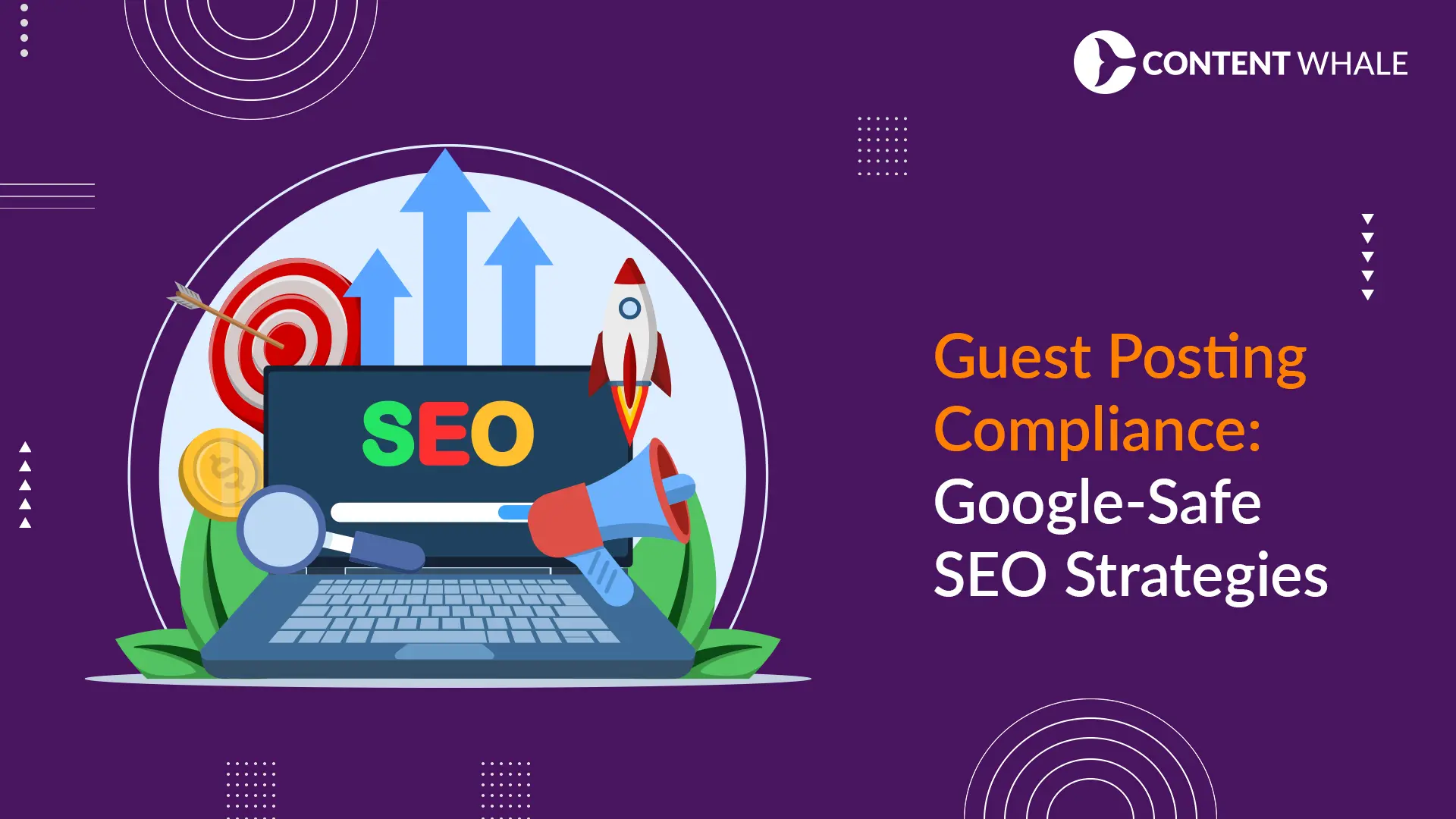Educational website content is different from other types of web content. It has to be informative, engaging, and relevant to the learners’ needs and goals. It also has to follow certain standards and best practices to ensure quality and effectiveness. In this article, we will share 13 effective practices for writing educational website content that can help you create a better learning experience for your audience.
Best Writing Practices for Educational Website Content
1. Focus On Your Target Audience
The first step in writing educational website content is to know your target audience. Who are they? What are their backgrounds, interests, motivations, and challenges? How do they prefer to learn and consume information?
By answering these questions, you can tailor your content to suit their needs and expectations. You can also use tools like Google Analytics or Hotjar to analyze your website traffic and user behavior.
2. Write Relevant Content
The next step is to write content that is relevant to your audience and your niche. You want to provide value and solve their problems, not just fill up space with fluff.
To write relevant content, you need to do some research and find out what topics and keywords your audience is searching for.
You can use tools like Google Trends or AnswerThePublic to discover popular and trending queries related to your niche.
You can also use tools like SEMrush or Ahrefs to analyze your competitors’ content and find gaps and opportunities.
3. Use The Funneling Or Inverted Pyramid

The funneling or inverted pyramid is a writing technique that helps you organize your content in a logical and clear way.
It involves starting with the most important and general information at the top, and then gradually moving to the more specific and detailed information at the bottom.
This way, you can capture your readers’ attention and interest from the beginning, and then provide them with more depth and context as they scroll down.
The funneling or inverted pyramid also helps you optimize your content for search engines, as they tend to prioritize the content that appears at the top of the page.
To learn more about content funneling, see here.
4. Prioritize Accuracy And Credibility
One of the most important aspects of writing educational website content is to ensure its accuracy and credibility.
You want to provide your readers with factual and reliable information that they can trust and learn from. To do this, you need to cite your sources and references, and use reputable and authoritative sources such as academic journals, books, reports, or experts.
You also need to avoid plagiarism and copying content from other websites, as this can damage your reputation and ranking.
You can use tools like Grammarly or Copyscape to check your content for grammar, spelling, and originality.
5. Align Content With Curriculum
Another important aspect of writing educational website content is to align it with the curriculum or learning objectives of your course or program.
You want to make sure that your content is relevant and consistent with what your learners are expected to learn and achieve. To do this, you need to map out your content and structure it according to the learning outcomes, topics, and subtopics of your curriculum.
You also need to use appropriate and consistent terminology, definitions, and examples throughout your content.
6. Write Short Sentences
One of the best practices for writing educational website content is to write short sentences.
Short sentences are easier to read and understand, especially for online learners who have limited attention spans and screen sizes.
Short sentences also help you avoid unnecessary words and complexity, and make your content more concise and clear.
To write short sentences, you need to use simple and active verbs, avoid passive voice and jargon, and break up long sentences into smaller ones.
7. Include Informative Elements

Another best practice for writing educational website content is to include informative elements that can help your readers navigate and comprehend your content.
These elements include subheadings, summaries, bullet points, lists, tables, charts, graphs, images, videos, quizzes, etc.
These elements can help you organize your content into sections and categories, highlight the main points and key takeaways, provide visual and interactive aids, and test your readers’ knowledge and understanding.
They can also make your content more engaging and appealing, and improve your SEO and user experience.
8. Incorporate Interactive Elements
One of the ways to make your educational website content more engaging and effective is to incorporate interactive elements that can stimulate your readers’ interest and participation.
These elements include polls, surveys, feedback forms, comments, forums, chats, games, simulations, etc.
These elements can help you create a two-way communication and interaction with your readers, collect their opinions and suggestions, encourage their collaboration and discussion, and provide them with fun and immersive learning experiences.
9. Add High-Authority External Links
Another way to enhance your educational website content is to add high-authority external links that can provide your readers with more information and resources.
These links can help you support your claims and arguments, provide additional examples and evidence, and direct your readers to other relevant and useful websites.
They can also help you build your credibility and authority, and improve your SEO and ranking.
However, you need to make sure that the external links are relevant and trustworthy, and that they open in a new tab or window, so that your readers don’t leave your website.
10. Write For Different Learning Styles
One of the challenges of writing educational website content is to cater to different learning styles and preferences of your audience.
Some learners may prefer to read text, while others may prefer to watch videos or listen to audio. Some learners may learn better by doing, while others may learn better by observing.
To write for different learning styles, you need to use a variety of formats and media, such as text, images, videos, audio, animations, etc.
You also need to use different methods and strategies, such as storytelling, examples, analogies, scenarios, case studies, etc.
11. Use Real-World Examples

One of the best ways to make your educational website content more relevant and relatable is to use real-world examples that can illustrate your concepts and ideas.
Real-world examples can help you connect your content to your readers’ lives and experiences, and show them how they can apply what they learn to their own situations and problems.
Real-world examples can also make your content more interesting and memorable, and spark your readers’ curiosity and imagination.
12. Use A/B Testing Pages in Backend
One of the best ways to optimize your educational website content is to use A/B testing pages in the backend.
A/B testing is a method of comparing two versions of a web page to see which one performs better in terms of metrics such as traffic, conversions, engagement, etc.
By using A/B testing, you can experiment with different elements of your content, such as headlines, images, colors, fonts, layouts, etc., and see which ones appeal more to your audience and achieve your goals.
Sadly, Google Optimize is now discontinued, but you can use a better tool like Optimizely to conduct A/B testing on your website. We have more options for you, here.
13. Use Assessments To Measure Learning
One of the best ways to evaluate your educational website content is to use assessments to measure learning.
Assessments are tools that can help you test your readers’ knowledge, skills, and attitudes, and provide them with feedback and guidance.
Assessments can also help you measure the effectiveness and impact of your content, and identify the areas of improvement and enhancement.
You can use different types of assessments, such as quizzes, tests, assignments, projects, portfolios, etc., and use tools like Google Forms or SurveyMonkey to create and administer them.
How do We Write Educational Website Content for you?
Writing educational website content is not an easy task. It requires a lot of research, planning, writing, editing, and testing.
It also requires a lot of creativity, expertise, and experience. That’s why we at Content Whale’s website content writing services are here to help you.
We are a team of professional and experienced content writers who can write high-quality and engaging educational website content for you.
Here are some of the benefits of working with us:
1. Dynamic Approach to Content Writing for Education
We understand that every educational website has its own goals, audience, and niche. That’s why we adopt a dynamic and customized approach to content writing for education.
We work with you to understand your needs and expectations, and create content that matches your vision and mission.
We also use the latest tools and techniques to write content that is relevant, informative, and engaging.
2. Incorporating Your Branding Elements and Guidelines
We know that your educational website is not just a source of information, but also a representation of your brand and identity.
That’s why we incorporate your branding elements and guidelines into your content. We use your logo, colors, fonts, tone, voice, and style to create content that reflects your personality and values.
We also ensure that your content is consistent and coherent across your website and other platforms.
3. Niche-Specific Educational Keyword Research
We know that your educational website content has to be optimized for search engines and users.
That’s why we conduct niche-specific educational keyword research to find out the best keywords and phrases that your audience is searching for.
We use tools like SEMrush or Ahrefs to analyze your competitors’ content and find gaps and opportunities.
We also use tools like Google Trends or AnswerThePublic to discover popular and trending queries related to your niche.
We then use these keywords and phrases strategically throughout your content to boost your visibility and ranking.
4. Website Content Frameworks That Encourage Engagement
We know that your educational website content has to be engaging and interactive. That’s why we use website content frameworks that encourage engagement and participation.
We use techniques such as funneling or inverted pyramid, informative and interactive elements, real-world examples, assessments, etc. to create content that captures and sustains your readers’ attention and interest.
We also use techniques such as storytelling, humor, emotion, etc. to create content that connects and resonates with your readers.
5. Multi-layered Editor Reviews Before Final Submission
We know that your educational website content has to be flawless and error-free. That’s why we use multi-layered editor reviews before final submission.
We have a team of editors who check and review your content for grammar, spelling, punctuation, syntax, readability, SEO, etc.
We also use tools like Grammarly or Copyscape to ensure that your content is original and plagiarism-free.
We make sure that your content meets the highest standards of quality and accuracy.
6. Various Reports
We know that you want to have a clear and comprehensive overview of your educational website content.
That’s why we provide you with various reports that can help you measure and improve your content performance.
These reports include plagiarism, readability, SEO, keyword density, word count, etc.
These reports can help you identify the strengths and weaknesses of your content, and provide you with suggestions and recommendations for improvement.
Conclusion
Writing educational website content is a challenging and rewarding task. It requires a lot of skills, knowledge, and creativity. It also requires updated best practices and strategies to ensure its quality and effectiveness.
In this article, we have shared 13 effective practices for writing educational website content that can help you create a better learning experience for your audience. We hope you found this article useful and informative.
If you need help with writing educational website content, you can contact us at Content Whale. Our professional and experienced educational website content writers can write high-quality and engaging educational website content, guaranteeing rankings.
We can help you create educational website content that can boost your visibility, credibility, and authority. Contact us today!

FAQ about Educational Website Content
Q. How do you write content for an educational website?
You need to follow some best practices and strategies, such as:
- Focus on your target audience
- Write relevant and informative content
- Use the funneling or inverted pyramid technique
- Prioritize accuracy and credibility
- Align your content with the curriculum or learning objectives
- Write short and simple sentences
- Include informative and interactive elements
- Incorporate real-world examples
Q. What is the description of an educational website?
An educational website is a website that provides information, resources, and services related to education and learning. It can be for students, teachers, parents, or anyone who wants to learn something new or improve their skills and knowledge. It can offer courses, programs, tutorials, articles, videos, quizzes, games, etc.
Q. How do I post educational content?
To post educational content, you need to have:
- A website or a platform where you can upload and share your content
- A content management system (CMS) or a tool that can help you create and edit your content
- A hosting service or a server that can store and deliver your content
- A domain name or a URL that can identify your website
Q. Why create educational content?
You create educational content to:
- Share your knowledge and expertise with others
- Help your audience learn something new or improve their skills and knowledge
- Build your credibility and authority in your niche
- Attract and retain your audience’s attention and interest
- Increase your visibility and ranking on search engines
- Generate leads and conversions for your business or organization
EdTech content is content that uses technology to enhance education and learning. It can include:
- Online courses and programs that can be accessed anytime and anywhere
- Educational apps and software that can provide interactive and personalized learning experiences
- Educational games and simulations that can make learning fun and engaging
- Educational podcasts and videos that can provide audio and visual aids
- Educational blogs and social media that can provide information and communication
Q. How do you create an education brand?
You create an education brand by:
- Defining your vision and mission
- Identifying your target audience and their needs and goals
- Developing your unique value proposition and differentiation
- Creating your logo, colors, fonts, tone, voice, and style
- Creating your website and other platforms
- Creating and distributing your content
- Building and maintaining your reputation and relationships
Q. What is the role of e-content in education?
The role of e-content in education is to provide:
- Information and resources that can support education and learning
- Flexibility and convenience that can suit different learners and situations
- Diversity and variety that can cater to different learning styles and preferences
- Feedback and guidance that can help learners monitor and improve their progress
- Collaboration and interaction that can foster a sense of community and engagement





